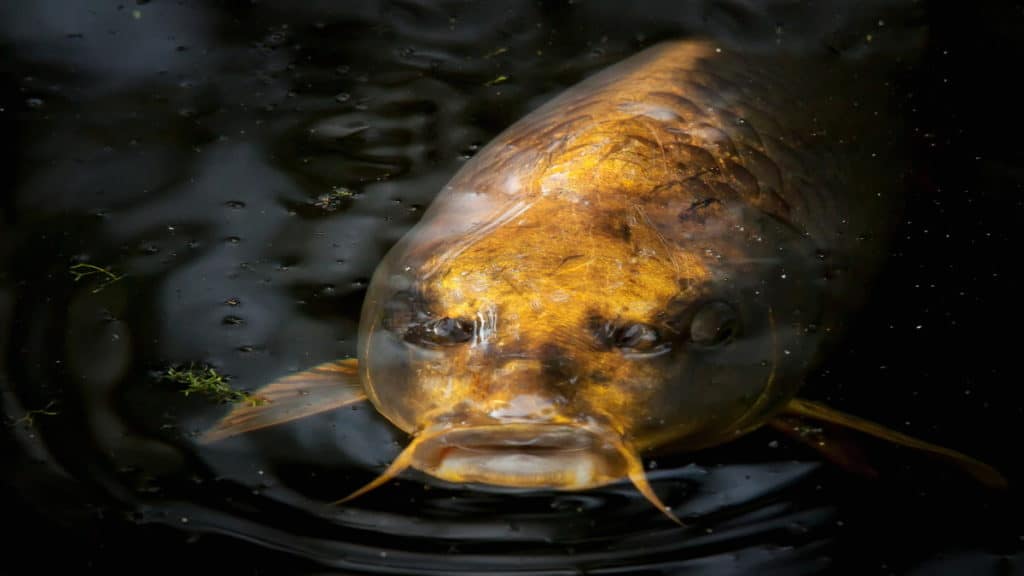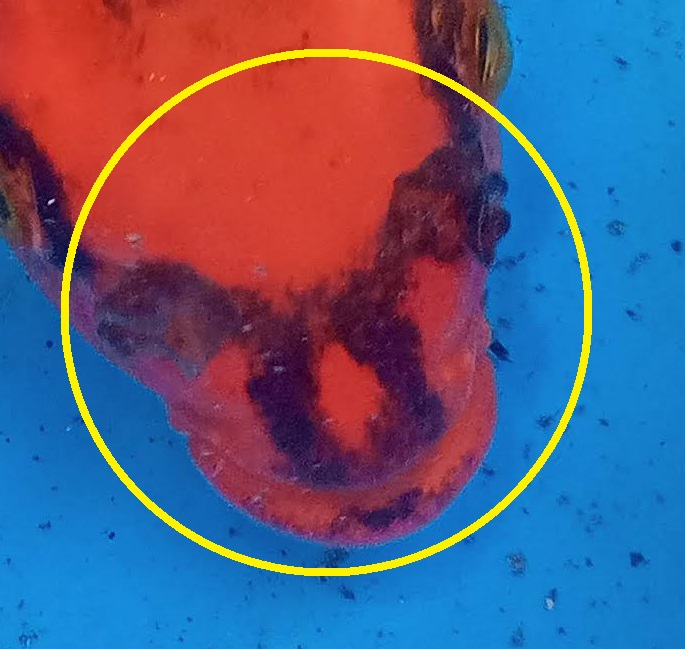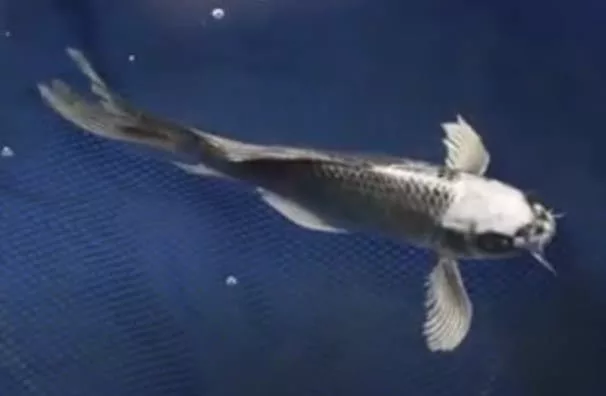Ghost Koi: The Enigmatic Aquatic Wonders ????????
Ghost koi, Explore the mystical world of Ghost Koi in this comprehensive guide. Discover their origins, care, breeding, and more about these captivating fish.
Introduction ????????

What are Ghost Koi? ????????
Ghost Koi, a captivating hybrid of koi and wild carp, are renowned for their ethereal beauty and grace. They are beloved by aquarists and pond enthusiasts for their striking appearance and unique characteristics.
Ghost Koi: Ethereal Elegance in Your Pond
The koi, a symbol of longevity and good fortune, has enthralled pond enthusiasts for centuries. But amidst the vibrant hues and bold patterns, a captivating newcomer emerges – the ghost koi. This enigmatic fish, shrouded in mystery and shimmering with an ethereal glow, has captured hearts and sparked curiosity.
A Spectral Beauty:
Unlike their vibrantly colored cousins, ghost koi boast a unique, metallic sheen. Their scales, often silvery or golden, shimmer like moonlight on water, reflecting the surrounding hues and creating an ever-changing spectacle. This mesmerizing effect earned them names like “platinum koi” and “ghost carp,” further adding to their mystique.
Ghost Koi vs. Koi:
While sharing the graceful form of koi, ghost koi are a distinct breed. Their lineage traces back to crossings between koi and common or mirror carp, resulting in a hardier fish with a faster growth rate. Ghost koi tend to be slightly larger than their koi counterparts, reaching lengths of up to 3 feet.
Ghost Koi Price:
The price of a ghost koi varies depending on several factors, including size, age, and specific variety. Generally, expect to pay anywhere between $50 and $500 for a young fish, with older and larger specimens reaching several thousand dollars.
Where to Find Ghost Koi for Sale:
Reputable koi breeders and specialized aquatic stores are the best places to find healthy and ethically sourced ghost koi. Be wary of online sellers with unclear information or suspiciously low prices.
Ghost Koi Yakuza 0:
Gamers may recognize the ghost koi from the popular video game “Yakuza 0.” In this title, the fish plays a significant role in the story, symbolizing resilience and hope amidst the gritty backdrop of the Japanese underworld.
Ghost Koi Faces:

Like their koi counterparts, ghost koi exhibit a wide range of facial features. Some sport prominent barbels, while others have softer, rounded heads. Their eyes, often a deep amber or black, add to their captivating aura.
Butterfly Ghost Koi:

Among the various ghost koi varieties, the butterfly ghost koi stands out. This stunning fish features elongated fins that gracefully flow behind it, resembling butterfly wings. Their shimmering scales and ethereal beauty make them a coveted addition to any pond.
Gold Ghost Koi:
For those seeking a touch of warmth, the gold ghost koi is a perfect choice. This variety boasts a golden sheen that dances in the sunlight, creating a truly mesmerizing effect.
Ghost Koi Size:
As mentioned earlier, ghost koi can grow quite large, reaching up to 3 feet in length. When choosing a pond for your ghost koi, consider their adult size and ensure adequate space for swimming and growth.
Origin and History ????????️
These captivating fish originated in the early 1980s in Japan through selective breeding. Initially known for their muted colors, they gained popularity due to their ghostly, metallic sheen, which distinguishes them from traditional koi.
Appearance ????????
Distinctive Features of Ghost Koi ????✨
Ghost Koi possess a smooth, metallic-like skin, showcasing a blend of shades, predominantly silver, white, and black. Their long, flowing fins and barbels contribute to their graceful appearance.
Color Variations and Patterns ????️????
Their coloration can vary, displaying shades ranging from pale silver to deep charcoal. Some exhibit ghostly patterns, resembling wispy smoke or ethereal clouds, while others showcase a more solid coloration.
Ghost Koi Habitat ????️????
Ideal Environment for Ghost Koi ????????
Creating a suitable habitat is vital for Ghost Koi’s well-being. They thrive in spacious ponds with ample space for swimming and hiding.
Water Conditions ????????️
Maintaining pristine water quality is crucial. Ghost Koi prefer well-aerated, clean water with moderate temperatures.
Suitable Pond Setups ????????
Adequate filtration systems and appropriate pond depth are essential. Incorporating plants and shelters enhances their environment.
Diet & Feeding ????️????
Ghost Koi Feeding Habits ????????
Ghost Koi are omnivorous and typically feed on a diet of pellets, insects, and algae. They enjoy scavenging at the pond bottom for food.
Recommended Diet and Feeding Schedule ????????️
A balanced diet comprising high-quality pellets supplemented with occasional treats like bloodworms or brine shrimp ensures their nutritional needs are met.
Health & Care ????????️
Common Health Issues ????⚠️
Ghost Koi, like other fish, are susceptible to parasites and bacterial infections. Regular observation and water testing can prevent health issues.
Tips for Maintaining Ghost Koi’s Health ????????
Maintaining proper water conditions, providing balanced nutrition, and quarantining new fish can significantly contribute to their well-being.
Breeding Ghost Koi ????????
Breeding Process and Considerations ????????
Breeding Ghost Koi involves creating a conducive environment for spawning and ensuring adequate care for the eggs and fry.
Rearing Fry and Caring for Offspring ????????
Monitoring water parameters, providing suitable food, and protecting the fry from predators are crucial aspects of successful breeding.
Ghost Koi Varieties ????????
Different Types of Ghost Koi ????????
Ghost Koi exhibit diverse variations, including butterfly, doitsu, and metallic Ghost Koi, each with distinct characteristics.
Notable Traits of Each Variety ????✨
Butterfly Ghost Koi have delicate, elongated fins, while metallic Ghost Koi showcase a brilliant, reflective appearance.
Interactions ????????
Compatible Tank Mates for Ghost Koi ????????
Ghost Koi are generally peaceful and cohabit well with other pond fish like goldfish and other non-aggressive species.
Behavioral Patterns ????????️
They exhibit social behavior and enjoy exploring their environment. Their graceful movements add beauty to any aquatic setting.
Ghost Koi in Culture ????????
Symbolism and Cultural Significance ????????
Ghost Koi symbolize perseverance, transformation, and good fortune in Japanese culture, often depicted in art and literature.
Ghost Koi in Art and Literature ????????
Their enigmatic allure has inspired artists and writers globally, featuring prominently in paintings, poetry, and stories.
Ghost Koi Conservation ????????️
Efforts for Preservation ????????
Conservation efforts aim to protect wild carp populations and maintain genetic diversity among Ghost Koi through responsible breeding practices.
Challenges and Future Prospects ????????
Challenges such as habitat loss and invasive species pose threats, underscoring the importance of sustainable conservation efforts.
The Elusive Specter of the Sotenbori: Tracking Down the yakuza 0 ghost koi
In the neon-soaked streets of Kamurocho and Sotenbori, where Yakuza 0 unfolds, legends whisper of a shimmering apparition beneath the murky waters. This is the Ghost Koi, a fish shrouded in myth, said to be as elusive as it is beautiful. Its scales, rumored to gleam with an ethereal glow, promise a hefty reward and bragging rights for any angler skilled enough to reel it in. But capturing this spectral denizen of the depths is no easy feat.
A Shadow in the Stream:
Catching the Ghost Koi requires patience and perseverance. Forget dropping your line in any old pond – this spectral fish calls the Sotenbori river its home. Head to the designated fishing spot near the Millennium Tower, where ripples hint at unseen movements below. But before you cast, be prepared. Unlike its common brethren, the Ghost Koi demands respect. Equip yourself with Special Bait, a rare and expensive commodity found at select shops. Forget cheap alternatives – only this delicacy will pique the interest of this finned phantom.
The Dance of Hook and Fin:
With your rod primed and bait wriggling, cast your line and watch the water. Ignore the schools of Koi flitting about – your quarry prefers solitude. Keep your eyes peeled for a fish swimming against the current, a telltale sign of the Ghost’s defiance. Once hooked, be ready for a struggle. This spectral fish fights with the fury of a thousand restless souls, demanding precise timing and unwavering focus. Don’t let it tire you out – reel it in steadily, respecting its power but never giving in.
A Glimmer of Fortune:
If your skill holds, the water will erupt in a burst of iridescent scales. You’ve landed the Ghost Koi! Bask in the fleeting glimpse of its ethereal beauty before claiming your prize. The rewards are far more than just bragging rights – a hefty sum awaits, along with a trophy for your collection, a testament to your angling prowess.
More Than Just a Catch:
The Ghost Koi is more than just a rare fish in Yakuza 0. It’s a symbol of perseverance, a challenge thrown down to the denizens of Kamurocho and Sotenbori. It’s a reminder that even in the concrete jungle, hidden wonders lurk beneath the surface, waiting to be discovered by those brave enough to seek them. So, grab your rod, stock up on Special Bait, and cast your line into the enigmatic depths. The Ghost Koi awaits, and the thrill of the chase is more than enough reward.
Conclusion ????????
The Allure of Ghost Koi and their Enduring Appeal ????✨
Ghost Koi, with their mesmerizing beauty and cultural significance, continue to captivate enthusiasts worldwide. Their elegance and adaptability make them a cherished addition to ponds, reflecting a harmonious blend of nature and artistry.
FAQs ❓????
Are ghost koi difficult to care for?
Ghost koi are generally hardy fish and relatively easy to care for. However, they do require a spacious pond with good water quality and proper filtration.
What do ghost koi eat?
Ghost koi are omnivorous and will readily consume a variety of foods, including flake food, pellets, algae wafers, and even vegetables.
Can ghost koi live with other fish?
Ghost koi are peaceful fish and can coexist with other pond inhabitants like goldfish and catfish. However, it’s important to ensure the pond is large enough to accommodate all fish comfortably.
How long do ghost koi live?
With proper care, ghost koi can live for 20 years or more.
You may also like
- https://www.giobelkoicenter.com/koi-fish-colors/
- https://www.giobelkoicenter.com/koi-fish-dreams/
- https://www.giobelkoicenter.com/koi-fish-meaning/